Who would have thought something as simple as a brand logo or business card could hold so much value? Well, the truth is, these visual identity elements hold immense importance as they are the face of your brand or brand identity for short. Therefore, it is only fitting that a professional brand identity designer be employed for the job.
Many businesses think having brand identity designers is overrated. Unfortunately, this is the first step of misconceptions that incur long-term damage. This article will help you understand who a brand identity designer is, what they do, and why they are a must-have for a booming brand identity.
Understanding the Role of a Brand Identity Designer
Many people think brand identity designers are basically graphic designers working for your business on a full-time basis. The truth is a graphic designer creates visuals that can be used for any purpose. For example, they might use graphics for communication or any other purpose.
On the other hand, a brand identity designer is a professional focused on creating a complete visual identity system for your business. They have intent and message behind every single aspect and element of their design. For instance, they will have an elaborate explanation as to why your brand has yellows in it and not oranges.
Brand identity designers build the tones for your business. Their designs set the pace and style for your brand, which usually has a lasting impression. But, of course, you must keep your tone and visual identity the same, which makes the job of a brand identity designer even more crucial.
What is Brand Identity Design?
Your company’s brand identity includes all the visual cues that help consumers distinguish your business from the billions of other companies worldwide. Most importantly, your brand identity helps distinguish you from your competitors.
What is the big deal, you may ask? Why differentiate in the first place?
The noise-to-signal ratio in the marketplace is skewing quite a lot. The noise levels are so high that brands find it hard to see and hear. Consumers are busy being bombarded with fake news, adverts by brands that can spend millions and clickbait.
So how can a brand with limited branding resources be seen and heard? How can it make an impact on the audience? How can it build a loyal community and convert it to sales and revenue?
You know the saying: “The journey of a thousand miles begins with a single step”.
That first step is the brand identity.
A brand identity is made up of a variety of visual cues including your:
- Logo Design
- Brand colors
- Mascot
- Tagline
- Font
- Culture/personality
This list isn’t inclusive – any visual representation of your company is part of your brand identity including using mascots in your branding. The above list simply includes the main elements of a company’s brand identity design. You can read more about each of these elements and more in an indepth guide on the importance of a brand identity system.
Your company’s identity should be consistent across all public facing documents, products and marketing campaigns.
To ensure consistency, many businesses create a Brand Identity Design Guidebook. The book often includes the official logo in a variety of approved sizes, the exact hex codes for brand colors, the official mascot in approved sizes and styles, the correct fonts to use in specific situations and the official way to use the company tagline (for example, how close it can be positioned to the logo, when it can and cannot be used and so forth).
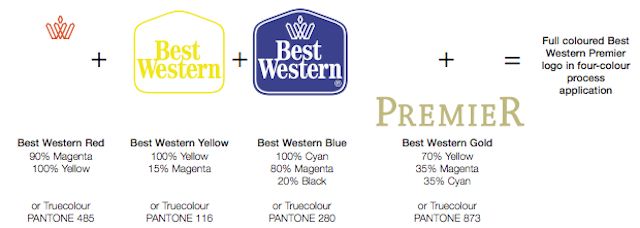
While these details may seem inconsequential, they are important for creating consistency among your brand. They also ensure that the quality of your brand identity remains high no matter who is working with the design elements.
You can see an example of Best Western’s Brand Identity Guidelines here.
Benefits of a Strong Brand Identity
Your business will reap a number of long-term benefits from a strong brand identity.
A brand identity makes your company memorable and easily recognized. Your brand identity becomes ingrained in the minds of your customers. Eventually, your brand identity elicits an emotional response from consumers that compels them to buy from you and not your competitors.
For example, seeing a red can of Coca-Cola will immediately bring to mind the bubbly taste of opening a new can and taking that first sip. For some this memory alone will compel them to go grab a can of Coca-Cola.
A strong brand identity helps you build community. Consumers like to engage with brands that have positive brand identities established through good design principles. And this is exactly what we at SpellBrand offer with our brand identity service.
The Coca-Cola brand, which has been around for a very long time, has established a strong brand identity. Their customers love the Coca-Cola brand and will go to bat for it when asked Coke vs. Pepsi. They will wear shirts bearing the red Coca-Cola color and millions of them engage on the Coca-Cola Facebook page.
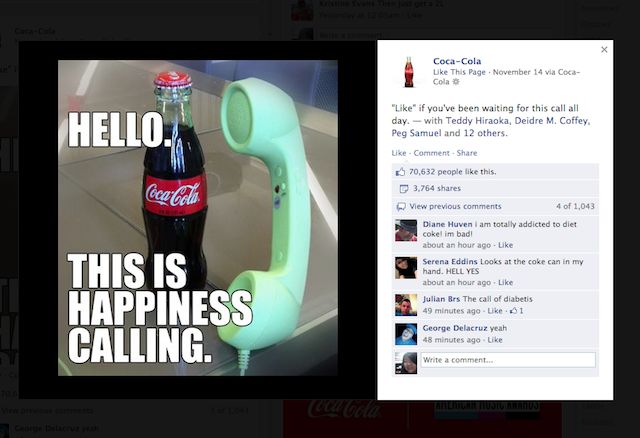
Additionally, a well-designed brand identity can add creditability to your company. People like to do business with companies that look professional and credibile.
If you are planning on spending any money on influencer marketing (and you should be if you are serious about gaining any kind of brand recognition), then your brand identity should be in top shape. Influencers would hesitate to respresent and tout a brand that looks bad. This would have a knock-on effect on their own brand.
The same goes for working with brand ambassadors. Invest in getting a strong brand identity so that your brand ambassadors would feel proud to be associated with your brand. This goes for your consumers too who can potentially become your brand ambassadors.
In fact, it has been proven time and again that people, consumers and brands tend to associate with brands that look good, strong and consistent.
Benefits of Hiring a Brand Identity Designer for Your Business
Having an amateur brand identity – or worse not having one at all – is like walking into the most important business meeting of your life dressed in a bathing suit. No one will take you seriously. And even if you have something good to say, you’ve hurt your credibility so badly with your first impression, no one is going to give you the chance to speak.
For example, which of these two companies would you prefer to do business with just by looking at the design of their site:
Site A

Site B
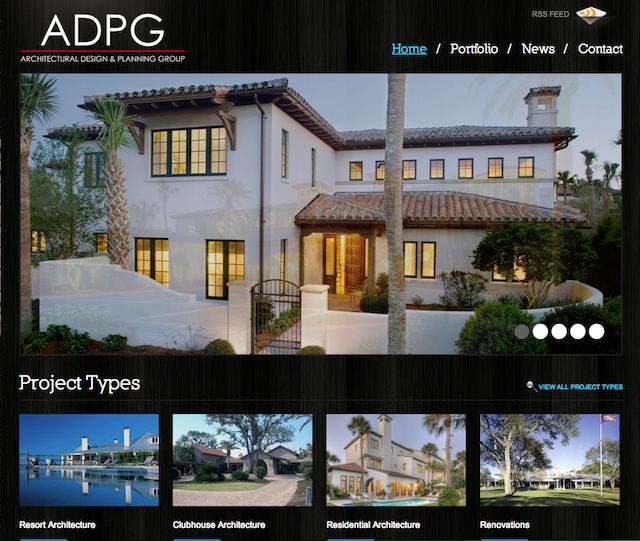
While both may be incredibly good architectural design companies, based on first-impressions I would lend more credibility to the people behind Site B.
There are some design elements in Site B that could be updated to make their brand identity stronger; however, you should clearly be able to see through this example how good design can make a difference in consumers choosing one business over another.
This is exactly why hiring an experienced brand identity designer is so important. It’s an investment in the future of your business and will generate a strong ROI over the lifetime of your company.
Consistent Design
A professional brand identity designer will help you create your logo design, website, marketing collateral, business cards and all other communication material so that you have a high-quality and consistent design to lend your business extra credibility.
They incorporate the perfect blend of color palettes, visual elements such as font and texture, shapes and lines, and other key elements to make a design that creates a strong and lasting brand identity.
However, it doesn’t end here. Your brand identity designer maintains your style guide as a roadmap for future designs and campaigns.
Authentic Brand Identity
A brand identity designer would spend quality time discovering your market segment, target audience, buyer personas, and brand essence and then create an identity that would make the right impact. They would not go rushing into creating designs just for the sake of how they look. Instead, they would undergo an intense design process to give you an identity that will stand the test of time.
A brand identity designer makes your company memorable and easily recognized. Thanks to their efforts, your brand identity becomes ingrained in the minds of your customers. Eventually, your brand identity elicits an emotional response from consumers that compels them to buy from you, not your competitors.
Key Elements of Brand Identity Design and Why They Matter
Your company’s brand identity includes all the visual cues that help consumers distinguish your business from the billions of other companies worldwide. But, most importantly, your brand identity helps distinguish you from your competitors.
A brand identity is made up of a variety of visual, design, and written cues. We list and explain their importance briefly here.
Name
Like a newborn baby, your brand needs a name. Name is the first element of identity, whether of a living or non-living, tangible or intangible object. This name becomes the mark of identification for your brand. People refer to, connect to, and share their reviews based on the name.
Some names have earned a reputation for being considered benchmarks for every product. For example, every detergent is called “Surf,” while every diaper is called “Pamper.” This is the impact a name can create.
Therefore, pay special attention when choosing a name for your brand. Of course, you cannot name your brand “Economic Mobile Phones” or “Natural Ingredients Beauty Products .” The name has to be concise, simple, yet catchy. It can be your brand logos, like Dove or Apple, or something else.
What matters is the visual identity you create to support and complement your brand name.
Logo Design
The next element is your logo. A brand logo is your business’s second most important element if you want it to maintain its place in the competitive market. Now here we draw a slight boundary. Not everyone needs a logo. Your requirement for a logo depends on your business type and scale.
For instance, a car mechanic doesn’t need a logo. However, when he decides to market his services or service station to a larger market and attract potential customers through social media marketing, he’ll need a logo to create a strong brand identity.
When it comes to design, you can be as creative as you like. But this is where a brand identity designer comes in. They will ensure you don’t overdo or underdo it.
Since these are creative folks with a strong sense of style and design, they can create a logo that will support your name, complement your brand story, and effectively communicate with potential customers.
Brand colors
Remember those subtle “red is the color of love” and “white is the color of peace” analogies we drew when selecting flowers for a bouquet? It turns out that it was pretty valid, but the color theory extends way beyond.
Colors have impressions. They convey feelings and messages. Every color has a temperature, tone, and feel, which helps us differentiate between their shades and use them where they best fit. These aspects of color come into play in a brand identity design too.
Selecting the right color palette creates a visual identity for the brand. Your colors will define your buyer persona. For instance, an orange and red color combination with shades of yellow will create your persona of a summer soda brand.
Undoubtedly, you would not want rose red and peach on your business card if you’re a corporate company, no matter how much you like the combination. So the question is, why not? Because these colors do not complement the “tone” of your business.
But, hang on, what if you’re a corporate company run by a woman? Then, maybe yes, you might be able to add hues of peach or red, but very carefully so.
Tagline or Slogan
A tagline is the quickest way of telling people who you are, what you do, and why you’re doing whatever you’re doing. Clearly, this makes taglines the trickiest element of a brand identity.
However, slogans do not necessarily describe or introduce a brand. They are more marketing-centric and can change as per the ongoing campaign. Thus, a brand can have several slogans but will have only one tagline.
Taglines and slogans can attract potential customers by touching pain points or evoking emotions. Nike, Apple, and countless other brands have taglines that touch human emotions instead of describing their work.
For example, L’Oreal has the slogan “because you’re worth it.” Although this tagline doesn’t say anything about what the brand sells, it creates a powerful foundation for attracting ideal clients by making them feel special for choosing L’Oreal’s products.
Font
Fonts have an immense visual identity in themselves. Every font style conveys a message and gives off a vibe. Therefore, they make up the elements of brand identity design.
Thin, long fonts emanate a professional and to-the-point feel. Big, bold ones give off power and pressure. These fonts are usually used in ad campaigns intended to attract unwavering attention. Curvy, cursive fonts are girlish and fragile, while round ones seem “childish.”
Every font style tells a different story. Your brand identity designer understands which font will best suit your brand.
This list isn’t inclusive – any visual representation of your company is part of your brand identity, including using mascots in your branding. However, the list above includes the main elements of a company’s brand identity design.
Your company’s identity should be consistent across all public-facing documents, products, and marketing campaigns.
To ensure consistency, many businesses create a Brand Identity Design Guidebook. The book often includes:
- The official logo is in various approved sizes.
- The exact hex codes for brand colors.
- The official mascot in approved sizes and styles.
- The correct fonts to use in specific situations.
- The official way to use the company tagline.
While these details may seem inconsequential, they are important for creating consistency in your brand. They also ensure that the quality of your brand identity remains high no matter who is working with the design elements.
The Takeaway
In the ever-increasing market competition, you need more than a social media handle and smart marketing tactics. Having a brand identity that supports all your marketing efforts and creates a lasting impression.
A professional brand identity designer is the best solution if you wish to have a flawless brand identity that doesn’t change with the weather. At SpellBrand, we are experienced, professional brand identity designers. Contact us today and request a free quote so we can prove to be the right company for you.
Good Brand Identity Design Example
To help you further visualize the benefits of good brand identity design, I present to you select elements of SEOmoz’s brand identity.
Website:
On the website you can see a few elements of SEOmoz’s brand identity including the official logo, Roger the Robot (their mascot) and the brand colors (blue/light yellow) being used throughout.
You’ll notice these same elements can be found on their other brand assets.
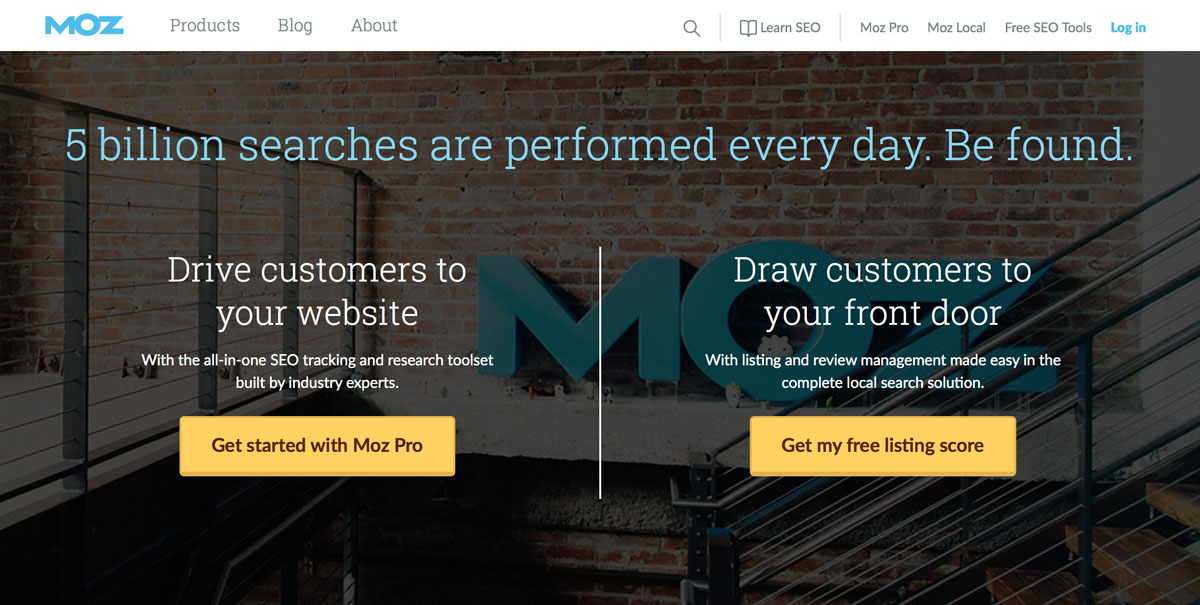
Twitter:
On SEOmoz’s official Twitter profile you can see Roger their mascot and their official logo prominently displayed.
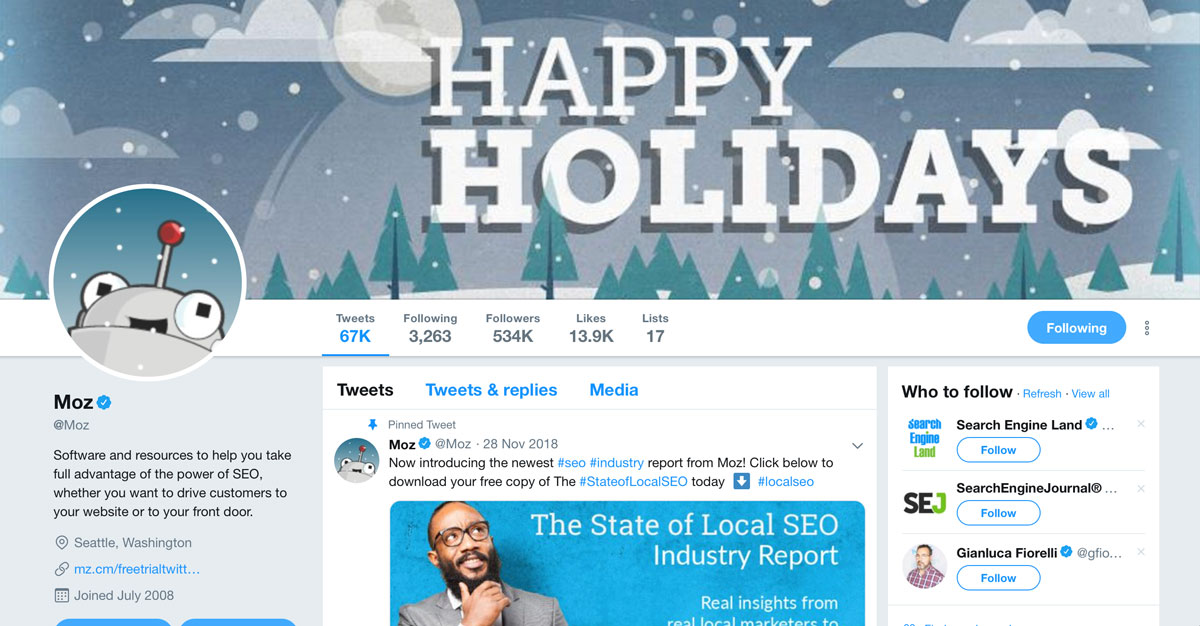
Facebook:
On Facebook again you can see Roger displayed as well as the same type of design being used that was used on the Twitter page. All of this creates brand consistency.
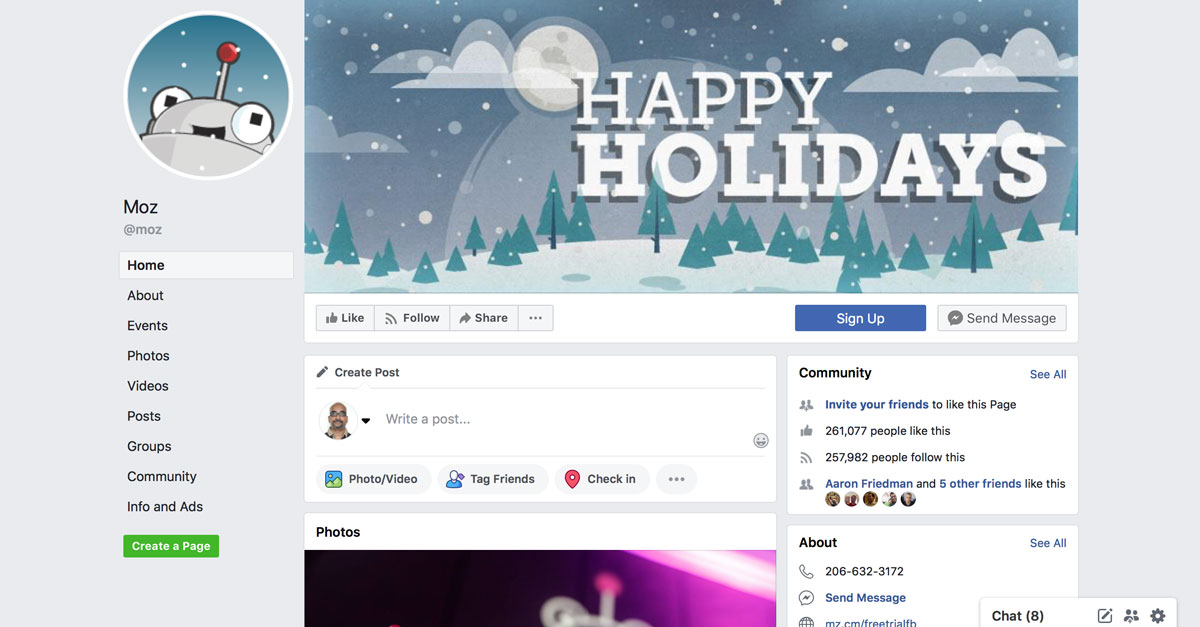
Business Cards:
Here you can see one set of SEOmoz business cards which again follow brand guidelines. It matches up well with the type of design seen on their Facebook page and also prominently displays their mascot, Roger.
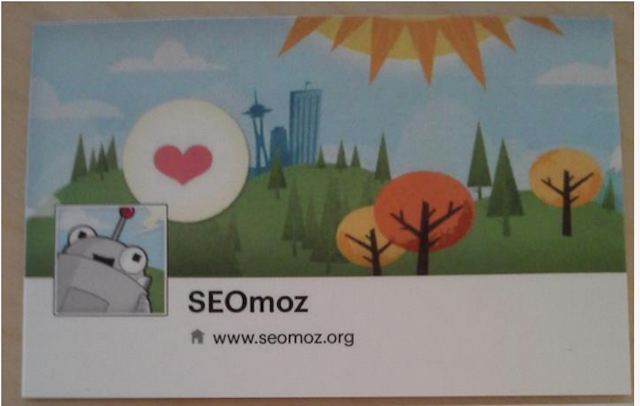
Conference Signage:
And the final example of good SEOmoz brand identity design can be seen in their conference signage. You can see the sign is made with the official SEOmoz logo including the exact colors that the logo must always be.
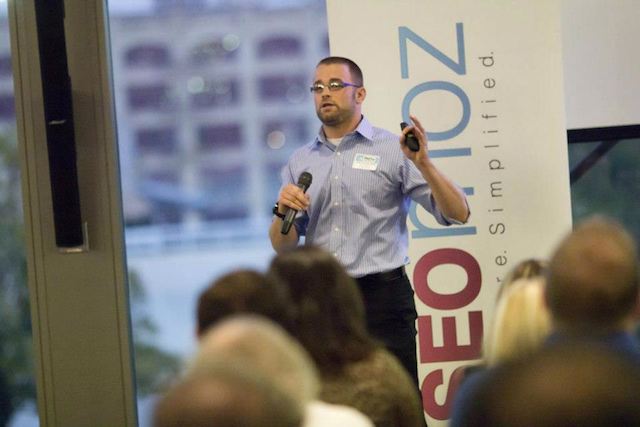
These are just a few examples of good brand identity design from SEOmoz. I’m sure if we were looking at their corporate stationary, official PowerPoint deck or other collateral, you would see the same identifying elements throughout.
A great brand identity designer will help your business create this type of consistency for your business.
Here at SpellBrand we happen to be experienced, professional brand identity designers. Contact us today and request a free quote to find out if we are the right company for you.
Many designers and graphic artists will tell you that the foundation of creating a great logo is sheer creativity and an eye for detail.
And really, these things are hard to learn—people are born with a creative eye it’s really not something you read and learn in books. But even the most creative graphic artists may fall into some mistakes that mean failure for their designs.
During brainstorming for concepts, graphic artists may get lost in all the ideas and suggestions that may overly complicate the design—so many people want so many elements into the logo that the designer is left confused.
Quick Design Rules to Live By
To help graphic artists through the concept and design process, here are some very, very basic design rules—they are really simple that designers often become irresponsible and forget them.
It’s always good to be reminded with the basics. Go through the list and see which ones you often miss out and which one needs some more work.
Quick Design Rules Checklist:
- It is best not to use more than three different colors on a single logo.
- The typeface must be readable as much as you want to stylize the entire thing.
- Don’t keep editing just because your friends give you some unsolicited comments. Go back to your target audience.
- Do not copy from other logos. It’s okay to take inspiration from really good ones, but don’t copy.
- Never, ever use clipart for your design. Be original. A professional graphic designer creates his own elements.
- Make sure the resolution is high enough to be used in outdoor billboards.
- Special effects are cliché. Try not to use drop shadow or light burst effects.
- A logo that will fit in a square is the best layout and the easiest to fit into most materials. Avoid obscure shapes.
- Make wise use of lines depending on the message you want to convey—sharp lines to communicate a strong, stable business.
- Never use a photo for a logo.
- Align each element of the logo in such a way that they hold together perfectly.
- You can totally use the brand’s name as the logo itself.
- Create two to three logo studies and have the right people choose the best. From there, you may continue improving.
- Don’t be too literal with your logo. A restaurant logo does not have to show food, in the same way that a car brand logo does not have to show a vehicle.
- Avoid using taglines in a logo. Simplify it for better recall.
- Choose your font wisely. Try not to use comic sans font style.
- Avoid those boring globe symbols.
- Try sketching your ideas on paper before executing it on the computer.
- Use colors wisely. Avoid neon bright colors, but don’t go for dull, boring ones.
- The overall design of the logo should be visually pleasing.
- Experiment with fonts before you land on the best one. There are websites with a wide range of font styles.
- Do your research on what the industry is all about and who your competitors are. This will help your design ideas.
- When you feel drained, take breaks in between the design process. This will give you fresh concepts and perspectives.
- Browse through various logo designs, not to copy them. But to take inspiration from them.
- Solid colors sometimes work best. Especially that this will cost you less during production.
- Always consider Helvetica when choosing typeface. This one never goes out of style.
- Aim for your logo to stand out and not be drowned by the trend.
- Planning wins you half the battle. Don’t design in vain, plan it out and brainstorm. And then, start the design process.
- Be open to constructive criticism about your work.
- Take your time while designing, rushed pieces may forsake quality.
- Get rid of unnecessary lines, strokes, and any other elements. If the logo can go without it, then it’s not important.
- The logo must be recognizable and easy to recall.
- Icons, symbols, and text must be placed in a way that they complement each other.
Frequently asked questions
Why is it important to have a consistent brand identity?
A consistent brand identity is vital to create a recognizable and memorable image in the minds of consumers. Beyond the conventional reasons, there are a few less obvious yet compelling factors that highlight the importance of maintaining a consistent brand identity:
Constructing a Multisensory Experience:
A consistent brand identity is not limited to visuals alone; it extends to a multisensory experience. This includes the sounds associated with your brand, the texture of your products, or even the scent in your stores. Such cohesive and harmonious experiences can profoundly imprint on the consumer’s mind and emotions.
Cultural Resonance:
A consistent brand identity can act as a cultural symbol, reflecting certain values, lifestyles, or ideologies. For instance, if your brand consistently positions itself as eco-friendly, it can become a symbol of environmental consciousness, resonating with eco-conscious consumers and communities.
Augmented Reality (AR) and Virtual Reality (VR):
In the era of AR and VR, a consistent brand identity can be extended to these virtual realms, creating a unique and immersive brand experience. This consistency across real and virtual worlds can make your brand more memorable and engaging.
Encouraging User-Generated Content:
A consistent brand identity can inspire customers to create content that aligns with your brands, such as social media posts, reviews, or videos. This not only amplifies your brand presence but also strengthens the brand community.
Artistic Expression:
Brands with a consistent identity can inspire artistic collaborations, from limited-edition merchandise designed by artists to music that captures the brand’s essence. These collaborations can add an extra layer of depth and interest to your brand identity.
Consistency in the Metaverse:
Consistent brand identity will play a crucial role in the emergence of the Metaverse – a collective virtual shared space. It will ensure your brand stands out and remains recognizable in this new digital frontier.
Semantic Consistency:
A less explored dimension is linguistic or semantic consistency. The language, tone, and storytelling style used in all communications, from ad campaigns to customer service, can reinforce the brand identity.
AI and Personalization:
Artificial Intelligence can be used to offer personalized experiences to consumers while maintaining a consistent brand identity. For instance, AI chatbots can interact with customers in a manner that aligns with your brand’s tone and personality.
Remember, the key to maintaining a consistent brand identity is to ensure that all aspects of your business, even the most obscure, align with and reinforce your brand values and personality. This will help create a strong, recognizable, memorable brand that stands out in the marketplace.
How can a brand identity designer help create a unique and memorable brand?
A brand identity designer plays an instrumental role in creating a distinct and memorable brand. Beyond the usual design elements such as logos, color palettes, and typefaces, here are some unconventional ways in which a designer can create a brand that truly stands out:
Designing for the Senses:
A brand identity designer can create a multi-sensory brand experience beyond visuals. This could include designing sound logos or “sonic branding,” like Intel’s distinctive chime. It could also involve designing textures for product packaging, creating an immersive, tactile experience for the customer.
Virtual and Augmented Reality:
With the advent of VR and AR, a brand identity designer can create immersive, 3D brand experiences. This could include designing virtual stores, product demos, or brand-themed AR filters for social media.
Designing for the Metaverse:
The Metaverse – a collective virtual shared space – has gained traction in the rapidly evolving digital landscape. A designer can create unique brand identities within this space, ensuring the brand stands out and is easily recognizable in this new frontier.
Generative Design:
Generative design uses algorithms and machine learning to create design elements. A brand identity designer can use this to create unique, dynamic designs that evolve over time or in response to specific data inputs.
Cultural Design:
A designer can incorporate local culture, folklore, or history elements into the brand identity to resonate with a specific audience. This could range from using traditional motifs in design elements to incorporating local dialects or slang in copywriting.
Interactive Design:
Interactive design elements can engage users and make the brand more memorable. This could include interactive logos, websites, or digital ads that respond to user actions.
Eco-conscious Design:
In an increasingly eco-conscious world, a brand identity designer can use sustainable design principles to make the brand stand out. This could involve designing minimalist packaging that reduces waste or using colors and materials that symbolize sustainability.
Storytelling through Design:
A designer can use visual storytelling to connect emotionally with the audience. This could be done through illustrations, animations, or infographics that tell the brand’s story.
A brand identity designer, with a blend of creativity, technical expertise, and understanding of the market, can create a brand identity that captures the essence of your brand and makes it stand out in unique and memorable ways.
How do you find the right brand identity designer for your business?
Finding the right brand identity designer for your business is crucial for creating a brand that resonates with your target audience and stands out in a crowded marketplace.
Besides the standard approach of examining portfolios and references, here are some unconventional strategies:
Design Hackathons:
Host or participate in a design hackathon. It’s a great way to see a variety of designers at work under pressure and assess their creativity, problem-solving skills, and ability to work within a team. It can be a unique approach to identify designers who can think out of the box.
Social Media Scouting:
Use social media platforms like Instagram or Pinterest to discover emerging designers. Look for those who consistently produce innovative work and have an aesthetic that matches your brand’s personality.
Virtual Reality Platforms:
If your brand is tech-oriented or you’re looking for a designer with skills in creating immersive experiences, consider scouting in virtual reality platforms. Here, designers showcase their ability to create in a 3D, interactive environment.
Art Schools and Universities:
Reach out to local art schools and universities. You can discover fresh talent with bold, innovative ideas often more in tune with current design trends.
Online Design Challenges:
Platforms like Dribbble or Behance host online design challenges. Participating designers showcase their skills and creativity within a set theme, and you can spot potential candidates based on their submissions.
Use AI Tools:
Artificial Intelligence can help match you with the right designer. Platforms like Designhill use AI to understand your preferences and recommend designers whose style matches your requirements.
Crowdsource Your Design:
Platforms like 99designs allow you to host design contests where designers worldwide can submit their ideas. It’s a great way to see a wide range of styles and ideas for your brand.
Engage with the Design Community:
Participate in design forums, and attend design events or webinars. Networking with the design community can lead you to potential candidates or recommendations.
Remember, the key to finding the right designer is not just about their technical skills but also their ability to understand and translate your brand’s essence into a visual identity. Therefore, always ensure the designer aligns with your brand values and understands your vision.
What might some of unique elements that a brand identity designer could consider when designing your brand?
A brand identity designer works to create a distinct and memorable image for your business.
While there are common elements such as color, typography, and logo design that designers usually consider, here are some unconventional and creative elements that they might also take into account:
Sonic Branding:
Sound can play a pivotal role in your brand identity in an increasingly digital and multimedia-centric world. Think of the unique tones when you boot a Mac or the Netflix ‘ta-dum’. A designer might consider developing a unique sound logo or jingle that becomes synonymous with your brand.
Interactive Elements:
With the rise of AR and VR, a brand identity designer might consider how your brand can interact with these mediums. It could be designing elements that come to life through AR filters or creating VR environments that reflect your brand’s essence.
Haptic Feedback:
In a digital space, designers could think about haptic feedback, how a device interacts with a user through touch. It’s subtle but can enhance user experience and reinforce brand identity.
Brand Scent:
Though more applicable to physical stores, a unique brand scent can create a strong customer memory association. A brand identity designer might work with a scent marketer to design a signature scent for your brand.
Microinteractions:
Microinteractions are subtle animations or design elements that react based on user behavior. They can make digital interactions feel more human and add character to your brand.
Typography Animation:
Moving beyond static typography, designers could consider animated or kinetic typography. This can be particularly impactful in video marketing or website design.
Custom Iconography:
Instead of generic icons, a designer might create custom iconography that aligns with your brand identity. This can make your branding more cohesive and unique.
Data Visualization:
If your brand deals with data or complex information, a designer might consider unique ways of visualizing this data that align with your brand identity.
Biophilic Design Elements:
Biophilia is a concept that suggests humans have an innate connection to nature. Incorporating natural elements into your design can create a calming, positive perception of your brand.
Inclusive Design:
A creative yet essential aspect of the design is ensuring it’s inclusive and accessible to all, including people with disabilities. This broadens your brand’s appeal and demonstrates your brand’s commitment to social responsibility.
Remember, these elements must be considered within the context of your brand’s target audience and industry. What works for one brand might not work for another. Maintaining a balance between being unique and communicating effectively with your audience is crucial.
What are some of the benefits of having a strong brand identity for your business?
A strong brand identity is pivotal for businesses in today’s competitive market. It sets you apart from competitors, resonates with your target audience, and fosters customer loyalty.
But, aside from these well-known advantages, let’s consider some of the less conventional benefits:
Facilitates Cryptocurrency Adoption:
In an increasingly digital world, cryptocurrencies are becoming a standard payment method. A strong brand identity could incorporate crypto technology, helping your business to attract a tech-savvy demographic and facilitating smoother international transactions.
Empowers Ethical Consumerism:
More consumers are concerned about the ethical implications of their purchases. A robust brand identity emphasizing sustainability or ethical business practices can attract these conscientious consumers and position your brand as a responsible choice.
Inspires User-generated Content:
A memorable brand identity can inspire your customers to create content around your brand – be it through social media posts, blogs, or videos. This user-generated content can serve as powerful, organic marketing for your business.
Opens Up Co-branding Opportunities:
An influential brand identity could lead to co-branding or collaboration opportunities with other strong brands. These partnerships can help you tap into new audiences, gain additional market presence, and benefit from associating with other reputable brands.
Enhances AI Interactions:
With AI-powered voice assistants becoming increasingly common, a well-crafted brand identity could extend into this space. For instance, your brand could have a distinct voice or personality for these AI interactions, furthering your brand’s consistency across platforms.
Creates AR/VR Brand Experiences:
A unique brand identity could be leveraged to create immersive AR or VR experiences for your customers. These experiences can generate a deeper connection with your brand, creating memorable interactions that foster brand loyalty.
Attracts Top Talent:
A compelling brand identity attracts not only customers but also prospective employees. A strong brand can help you recruit top talent who identify with your brand’s values and want to be part of your vision.
Encourages Innovation:
A strong brand identity can also foster a culture of innovation within your company. When your brand values creativity and progress, it encourages employees to push boundaries and develop fresh ideas continually.
Facilitates Community Building:
A strong brand identity can be the foundation of a passionate community of customers who advocate for your brand. This sense of community can increase customer retention, valuable feedback, and powerful word-of-mouth marketing.
Influences Social Change:
Finally, a strong brand identity can extend beyond business to influence social change. If your brand values align with pressing social issues, you can use your influence to raise awareness and contribute to solutions, building a legacy that goes beyond products or services.

